Your gateway to endless inspiration
Kyoto - Blog Posts










Part 2:
More pictures of Japan with Fuecoco
Primeras fotos Machiya:




SEGUDA FOTO : Entrada a un Onsen.


COMO EJEMPLO :

Sean bienvenidos, japonistas arqueológicos, a una nueva entrega en este blog sobre temática japonesa en general. Una vez dicho esto, pónganse cómodos, que comenzamos.
-
El año pasado, indagando por Tumblr, me encontré una cuenta en la que compartía la imagen que veréis como ejemplo después de los onsen, porque esta cuenta, que la mantendré en anonimato, no sé con qué objetivo lo hizo, si fue mero entretenimiento o que se confundió, porque puso la foto que veréis como ejemplo de terma romana, un manga con el símbolo de los onsen (おんせん), y lo puso con una calle de fondo típica tradicional del periodo Edo, donde aparecían las llamadas machiya (まちや), que son casas de comerciantes, artesanos, con su peculiar símbolo sugidama (すぎだま), que representa el sake, es decir, cuando se puede recoger, ya que el sake ha madurado y se puede beber.
-
He querido hacer esta publicación no a modo de crítica, sino a modo de aclaración, porque como no sé con el objetivo que lo hizo, pues me gustaría aclarar con esta publicación lo que realmente es un onsen, que son lugares de aguas termales ♨️, y que pueden estar al aire libre y los hay de muchos tipos.
-
Espero que os haya gustado. Espero que paséis una muy buena semana y nos vemos en próximas publicaciones. Hasta la próxima.
-
ようこそ、考古学的日本愛好家の皆さん、日本をテーマにしたこのブログの新しい回へ。とはいえ、くつろいでください。 というのも、このアカウントは匿名にしておくが、どういう目的でこのようなことをしたのか、単なる娯楽だったのか、それとも混乱してしまったのかは分からない、 江戸時代の典型的な伝統的な町並みの背景には、いわゆる町家(商人や職人の家)があり、独特のシンボルである「杉玉(すぎだま)」は酒を表している。
-
私はこの出版物を批評としてではなく、明確化として作りたかった。というのも、私はこの出版物を作った目的を知らないので、この出版物によって、温泉とは本当は何なのかを明らかにしたいと思う。温泉の場所は♨️、屋外にあり、多くの種類がある。-お気に召していただけたなら幸いです。それでは、今週も良い一週間をお過ごしください。それではまた次回。
-
Welcome, archaeological Japanophiles, to a new instalment in this general Japanese-themed blog. That being said, make yourselves comfortable, we're getting started. Last year, digging through Tumblr, I came across an account that shared the image you will see as an example after the onsen, because this account, which I will keep anonymous, I don't know with what purpose it did it, if it was mere entertainment or that it got confused, because it put the picture you will see as an example of a Roman bath, a manga with the symbol of the onsen (おんせん), and put it with a typical traditional background street of the Edo period, where appeared the so-called machiya (まちや), which are houses of merchants, artisans, with its peculiar symbol sugidama (すぎだま), which represents the sake, that is, when you can collect, since the sake has matured and can be drunk. -I wanted to make this publication not as a criticism, but as a clarification, because as I do not know with the objective that made it, I would like to clarify with this publication what really is an onsen, which are places of hot springs ♨️, and that can be outdoors and there are many types. -I hope you liked it. I hope you have a great week and see you in future posts. See you next time.
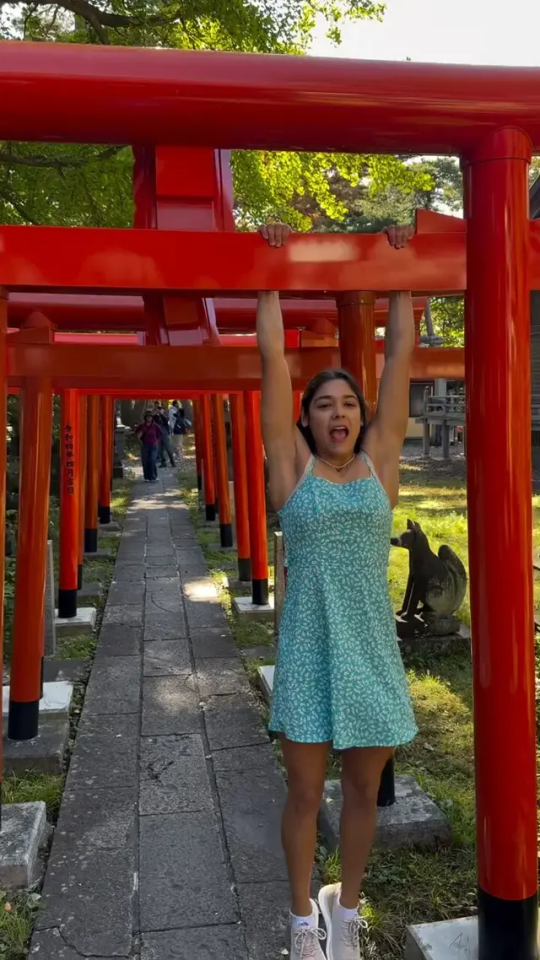



Sean bienvenidos amantes del mundo japonés, a una nueva publicación de actualidad. Dicho esto póngase cómodos que empezamos.
En esta ocasión, vuelvo otra vez a traer malas noticias sobre el país del sol naciente. Veo que la gente es muy burra y muy payasa por intentar ganar unos asquerosos likes de migrantes, comentarios, entre otras cosas, a través de la red social y dárselas de importante, de decir:Mira dónde he estado, mira lo que he hecho, solo con tal de llevar la atención y hacer el ridículo. Este tipo de gentuza no les importa, no les interesa la historia ni la cultura ni nada en absoluto, nada que tenga que ver con alguno de estos puntos mencionados anteriormente o algo similar; solo van a estos países, sobre todo al país desconocido o a países circundantes, porque están de moda y porque está en la sensación máxima ir para quedar bien y decir ante tus amigos o conocidos, Mirad dónde he ido y tú no. Por culpa de gentuza y de peña así, determinadas áreas del país del sol naciente están siendo vetadas para los turistas. Esto no quiere decir que los japoneses odien a los extranjeros y menos a los turistas; lo que odian son determinadas acciones o actitudes de dichos turistas, como subirse, por ejemplo, a la estatua de un perro icónico llamado Hachiko en frente de a estación de Shibuya.
-
O por ejemplo como el caso de la chilena inculta e inmadura por hacer el postureo en un lugar sagrado para los japoneses para mí es una calumnia y una blasfemia lo que ha hecho la chilena y además para mí es un insulto lo que los turistas están llegando a hacer en Japón convirtiéndolo en un parque de atracciones por favor parad ya de hacer el gilipollas o el imbécil en un país dejad que vaya gente que realmente valore y aprecie cultura, valores costumbres de un país. Temo postear esto en 2025; la raza humana da vergüenza.
-
Espero que os haya gustado y nos vemos en próximas publicaciones. Que pasen una buena semana.
-
日本世界を愛する皆さん、最新刊へようこそ。そうは言っても、安心して始めましょう。
-
この機会に、私は日出ずる国についての悪い知らせを伝えるために再び戻ってきました。ソーシャルネットワークを通じて、とりわけ移民から嫌な「いいね」やコメントを獲得しようとして、偉そうなふりをして、「私がどこにいたのか、私がどうなったのか見てください」と言う人々は、非常に愚かで非常にピエロであることがわかります。注目を集めて自分を馬鹿にするためだけにやったのです。このタイプの人々は、歴史や文化などにはまったく興味がなく、上で述べた点や同様のものとは何の関係もありません。彼らがこれらの国、特に未知の国や周辺国に行くのは、ファッショナブルだからであり、見栄えを良くして友人や知人に「ほら、私はどこに行ったのに、あなたはどこに行ったの?」と言うのが究極の感覚だからです。 t.このような暴徒や集団のせいで、日出ずる国の特定の地域は観光客の立ち入りが禁止されています。これは、日本人が外国人を嫌い、さらには観光客を嫌っているという意味ではありません。彼らが嫌うのは、例えば渋谷駅前にあるハチ公と呼ばれる象徴的な犬の像に登るなど、観光客の特定の行動や態度だ。
-
あるいは、例えば、日本人の神聖な場所でポーズをとった無学で未熟なチリ人女性の事件のように、私にとってチリ人女性の行為は中傷であり冒涜であり、また私にとって観光客の行為は侮辱である。日本で何をするか、遊園地に変えるか、その国で嫌な奴や馬鹿みたいな行動はやめて、その国の文化、価値観、習慣を本当に大切にして感謝している人たちを去らせてください。 2025 年にこれを投稿するのは怖いです。人類は恥ずべき存在だ。
-
気に入っていただければ幸いです。今後の投稿でお会いしましょう。良い一週間をお過ごしください。
-
Welcome, lovers of the Japanese world, to a new publication of current events. Having said that, make yourself comfortable, we're starting.
-
On this occasion, I am back again with bad news about the country of the rising sun. I see that people are very stupid and very clownish trying to gain some disgusting likes from migrants, comments, among other things, through the social network and acting like they are important, saying: Look where I've been, look what I've done, just to attract attention and make a fool of themselves. These types of scum don't care, they are not interested in history or culture or anything at all, nothing that has to do with any of these points mentioned above or anything similar; they only go to these countries, especially to the unknown country or surrounding countries, because they are fashionable and because it is the ultimate feeling to go there to look good and say to your friends or acquaintances, Look where I've been and you haven't. Because of scum and people like that, certain areas of the country of the rising sun are being banned for tourists. This doesn't mean that the Japanese hate foreigners and even less tourists; what they hate are certain actions or attitudes of said tourists, such as climbing, for example, the statue of an iconic dog called Hachiko in front of Shibuya station.
-
Or for example, like the case of the uneducated and immature Chilean woman for posing in a sacred place for the Japanese. For me, what the Chilean woman has done is slander and blasphemy, and for me, what tourists are doing in Japan by turning it into an amusement park is an insult. Please stop being an idiot or an imbecile in a country. Let people who really value and appreciate the culture, values, and customs of a country go there. I'm afraid to post this in 2025; the human race is shameful.
-
I hope you liked it and I'll see you in future posts. Have a good week.

Sean bienvenidos, japonistasarqueológicos, a una nueva entrega de religión nipona, una vez dicho esto pónganse cómodos qué empezamos. - Seguramente, todos hemos escuchado hablar del Budismo y Sintoísmo, dos religiones muy diferentes entre sí, ya que sus pilares religiosos no están hechos de la misma materia, voy a intentar resumir este tema para que todos podamos entenderlo mejor. ¿Cuándo llego el budismo a Japón? Llego en el siglo VI d.c en el período kofun también denominado protohistoria, lo que no voy a negar y lo que todos sabemos es que china, India y otros países influenciaron a Japón y eso lo podemos ver todavía a día de hoy. - Pero hace poco vi el uso de la palabra Sincretismo religioso, lo cual, me parece el término de lo menos apropiado, ¿Qué significa sincretismo? Unión, fusión e hibridación, casos más claros, lo podemos ver en Latinoamérica y con Grecia y Roma. Por lo cual el término más apropiado para este caso sería coexistencia o convivencia, además en el periodo meiji hubo una reforma religiosa para separar ambas religiones y convivencia al sintoísmo, religión del estado, a esto se le llama Shinbutsu bunri en hiragana sería:(しんぶつぶんり) ¿Qué opinan ustedes? - Espero que os haya gustado y nos veamos en próximas publicaciones que pasen una buena semana. - ようこそ、考古学的日本びいきの皆さん、日本の宗教の新連載へ。 - 仏教と神道、この二つの宗教の柱は同じ材料でできているわけではないので、私たちは皆、この二つの宗教について聞いたことがあるだろう。 仏教はいつ日本に伝来したのだろうか?仏教が日本に伝来したのは紀元6世紀の古墳時代で、原始時代とも呼ばれている。しかし、中国やインド、その他の国々が日本に影響を与えたことは否定しないし、誰もが知っていることである。 - しかし最近、宗教的シンクレティズムという言葉が使われているのを目にした。シンクレティズムとは何を意味するのだろうか?統合、融合、ハイブリッド化、その最も明確な例はラテンアメリカやギリシャ、ローマに見られる。また、明治時代には宗教改革が行われ、両宗教を分離し、国教である神道と共存させた。 - 今後の記事もお楽しみに。
-
Welcome, archaeological Japanophiles, to a new instalment of Japanese religion, so make yourselves comfortable and let's get started.
Surely, we have all heard about Buddhism and Shintoism, two very different religions from each other, as their religious pillars are not made of the same material, I will try to summarize this topic so we can all understand it better. When did Buddhism arrive in Japan? It arrived in the 6th century A.D. in the Kofun period also called protohistory, what I will not deny and what we all know is that China, India and other countries influenced Japan and we can still see that today.
But recently I saw the use of the word religious syncretism, which seems to me the least appropriate term, what does syncretism mean? Union, fusion and hybridisation, the clearest cases of which can be seen in Latin America and with Greece and Rome. So the most appropriate term for this case would be coexistence or coexistence, also in the meiji period there was a religious reform to separate both religions and coexistence to Shinto, state religion, this is called Shinbutsu bunri in hiragana would be:(しんぶつぶんり) What do you think?
Hope you liked it and see you in future posts have a good week.
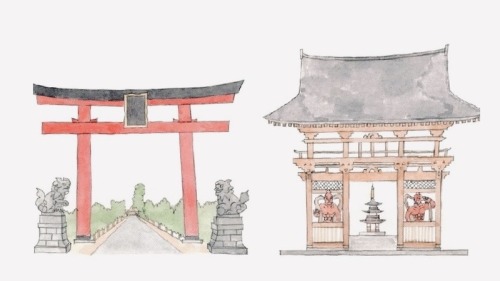
Sean bienvenidos a una nueva publicación en la cual aclararemos las diferencias entre un templo y un santuario japonés dicho esto pónganse cómodos que empezamos. - Seguramente, todos hemos visto alguna vez en fotos templos y santuarios que están por todo el archipiélago nipón y más de una vez nos hemos preguntado: ¿Cuáles son las diferencias entre ellos? - Primero la palabra santuario ¿Qué significa?: Es el lugar en el que los japoneses adoran a todos los kamis por lo cual cada uno tiene el suyo propio, también cabe destacar que puede ser una montaña un lago ect.. Cuando buscamos esta palabra en español, hace referencia a un templo,entonces ¿Cuáles son las principales diferencias? la principal sería que los santuarios sintoístas, disponen de una puerta principal llamada torii a diferencia de los templos budistas, que disponen de una pagoda. Ejemplos de templos budistas por ciudades Templo de Kiyomizu-dera (Kioto) Templo Kinkakuji (Kioto) Templo Senso-ji (Tokio) Templo de Hokokuji (Kamakura) Templo Todai-ji (Nara) Templo de Sanjusangendo (Kioto - Santuarios japoneses por ciudades: Santuario de Ise – Ciudad de Ise Santuario Meiji – Tokio Santuario Itsukushima – Miyajima Santuario Sumiyoshi Taisha – Osaka Santuario Hie Jinja – Tokio Santuario Izumo – Ciudad de Izumo - Para aclarar las dudas, entre un santuario y un templo: También hay que tener en cuenta los distintos nombres y otras de las cosas que caracterizan un templo son las siguientes : Komainu, Temizuya o chōzuya, Salas principales, Amuletos,Komainu, Temizuya el honden y el haiden. En próximos capítulos podemos hablar de cada uno de ellos, aparte de seguir realizando publicaciones de historia, arqueología, geografía entre otros temas de japón os deseo un cordial saludo. - Welcome to a new publication in which we will clarify the differences between a temple and a Japanese sanctuary. That being said, make yourself comfortable and let's get started. - Surely, we have all seen temples and sanctuaries that are all over the Japanese archipelago in photos and more than once we have asked ourselves: What are the differences between them? - First, the word sanctuary What does it mean?: It is the place where the Japanese worship all the kamis, so each one has their own, it is also worth noting that it can be a mountain, a lake, etc. When we look for this word in Spanish, it refers to a temple, so what are the main differences? The main one would be that Shinto shrines have a main door called torii. unlike Buddhist temples, which have a pagoda. Examples of Buddhist temples by city Kiyomizu-dera Temple (Kyoto) Kinkakuji Temple (Kyoto) Senso-ji Temple (Tokyo) Hokokuji Temple (Kamakura) Todai-ji Temple (Nara) Sanjusangendo Temple (Kyoto) Shitennoji Temple (Osaka) - Japanese shrines by cities: Ise Shrine – Ise City Meiji Shrine – Miyajima Sumiyoshi Taisha Shrine – Osaka Fushimi Inari Shrine – Kyoto Hie Jinja Shrine – Tokyo Izumo Shrine – Izumo City - To clarify doubts, between a sanctuary and a temple: We must also take into account the different names and other things that characterize a temple are the following: Komainu, Temizuya or chōzuya, Main rooms, Amulets, Komainu, Temizuya the honden and the haiden. In future chapters we can talk about each of them, apart from continuing to publish publications on history, archaeology, geography, among other topics about Japan, I wish you a cordial greeting. - 寺院と日本の聖域の違いを明確にする新しい出版物へようこそ。そうは言っても、安心して始めましょう。 - 確かに、私たちは皆、日本列島各地にある寺院や聖域を写真で見たことがあり、それらの違いは何だろうかと自問したことが一度や二度ではありません。 - まず、聖域という言葉はどういう意味ですか?: それは日本人がすべての神を崇拝する場所であり、それぞれに独自の神があり、それが山や湖などであることも注目に値します。この単語はスペイン語で寺院を指しますが、主な違いは何でしょうか? 主なものは、神社には鳥居と呼ばれる表扉があることです。 塔のある仏教寺院とは異なります。 都市別の仏教寺院の例 清水寺(京都) 金閣寺(京都) 浅草寺(東京) 報国寺(鎌倉) 東大寺(奈良) 三十三間堂(京都) 四天王寺(大阪) - 都市別の日本の神社: 伊勢神宮 – 伊勢市 明治神宮 – 東京 厳島神社 – 宮島 住吉大社 – 大阪 伏見稲荷大社 – 京都 日枝神社 – 東京 出雲大社 – 出雲市 - 聖域と寺院の間の疑問を解消するには、次のような名前や寺院を特徴付けるその他のものについても考慮する必要があります: 狛犬、手水舎または手水舎、主室、お守り、狛犬、本殿と拝殿。 今後の章では、歴史、考古学、地理、その他日本に関するトピックに関する出版物の発行を続けることに加えて、それぞれのテーマについてお話します。心からご挨拶を申し上げます。


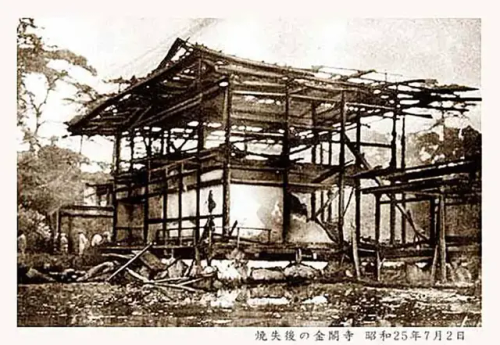
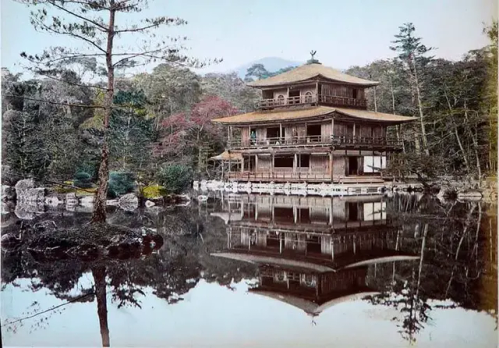



Sean bienvenidos, japonistasarqueologos, a una nueva entrega, cultural-artística vamos a hablar sobre Kinkaku-ji una vez dicho esto pónganse cómodos que empezamos. - El kinkaku-ji se localiza en la ciudad de Kyoto, en la prefectura de kansai. Kyoto fue una de las dos grandes capitales del Japón feudal porque su otra ciudad de gran peso fue Nara, pero eso es otra historia. - El Kinkaku-ji, fue construido en el siglo XIV, el que se ve actualmente es una reconstrucción porque el original se destruyó en un incendio en 1950 y el actual data de 1980 aproximadamente ya en 1880 perdió su revestimiento de pan de oro, fue La residencia de Ashikaga yoshimitsu tras su muerte lo donó a la orden religiosa y pasó a ser un templo budista. - Espero que os guste y nos vemos en próximas publicaciones. Fuentes de foto: https://blogukiyoe.es/kinkaku-ji-en-el-ukiyo-e wikipedia - Welcome, Japanese archaeologists, to a new cultural-artistic installment, we are going to talk about Kinkaku-ji. Once that has been said, make yourself comfortable and we will begin. - Kinkaku-ji is located in the city of Kyoto, kansai prefecture. Kyoto was one of the two great capitals of feudal Japan because its other major city was Nara, but that is another story. - The Kinkaku-ji was built in the 14th century, the one currently seen is a reconstruction because the original was destroyed in a fire in 1950 and the current one dates from approximately 1980 and in 1880 it lost its gold leaf coating, it was La residence of Ashikaga Yoshimitsu after his death he donated it to the religious order and it became a Buddhist temple. - I hope you like it and see you in future posts. Photo sources: https://blogukiyoe.es/kinkaku-ji-en-el-ukiyo-e Wikipedia - 日本の考古学者の皆さん、新しい文化芸術の回へようこそ。金閣寺についてお話します。それが終わったら、落ち着いてから始めましょう。 - 金閣寺は関西県京都市にあります。京都は、もう一つの主要都市が奈良であったため、封建時代の日本の二大首都の一つでしたが、それはまた別の話です。 - 金閣寺は 14 世紀に建てられ、現在見られるものは再建されたものです。オリジナルは 1950 年の火災で焼失し、現在のものは 1980 年頃のもので、1880 年に金箔のコーティングが失われ、ラ邸でした。足利義満の死後、教団に寄進され仏教寺院となった。 - 気に入っていただければ幸いです。今後の投稿でお会いしましょう。 写真出典: https://blogukiyoe.es/kinkaku-ji-en-el-ukiyo-e ウィキペディア

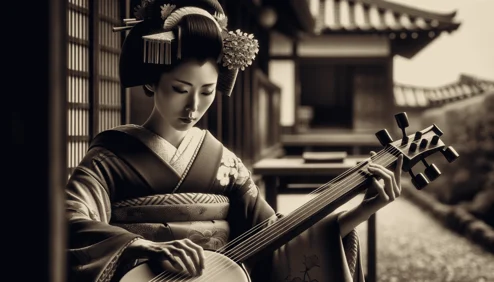
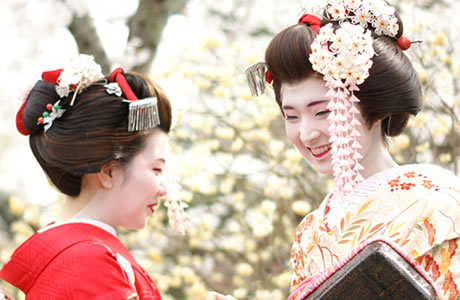


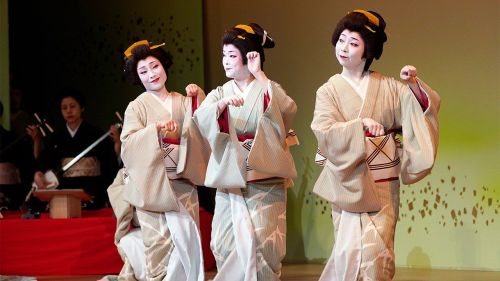

Hace unos meses, ha tenido lugar en el país del sol naciente en uno de los distritos más populares de Kyoto, por el que transcurren las geishas a pesar de los avisos que se han hecho respecto al tema, como: El no hacer fotos o vídeos, la gente ha pesado de los avisos que se han hecho. - Parece ser que hay personas que se lo han pasado por donde les ha dado la gana hay gente que ha llegado a tirarle de la ropa, además de perseguirlas cuando se iban a meter en el taxi y un largo etcétera a día de hoy desde este pasado mes de abril, pues, no se puede entrar a no ser que entres y pagues una multa lo cual me parece bien y también me parece bien como sistema para controlar el exceso de turismo. - ¿Qué opinan ustedes? Os leo en comentarios. - A few months ago, it took place in the land of the rising sun in one of the most popular districts of Kyoto, where geishas hang out despite the warnings that have been made regarding the subject, such as: Do not take photos or videos , people have weighed the warnings that have been made. - It seems that there are people who have had it wherever they wanted, there are people who have even pulled at their clothes, in addition to chasing them when they were about to get into the taxi and a long etcetera to this day from this past month of April, well, you cannot enter unless you enter and pay a fine, which seems fine to me and also seems fine to me as a system to control excess tourism. - What do you think? I read you in comments. - 数カ月前、日出ずる国の京都で、芸者衆が通る人気の繁華街で、こんなことがあった: 写真やビデオを撮らないよう、人々は警告を重く見た。 - 昨年4月の今日から、入場して罰金を払わない限り入場できないようになったが、これはこれでいいような気もするし、過剰な観光を抑制するシステムとしてもいいような気もする。 - どう思いますか?どう思いますか?
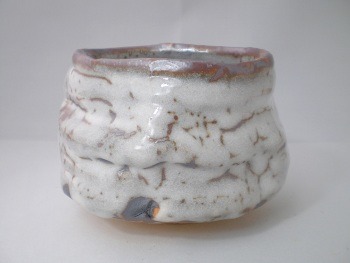
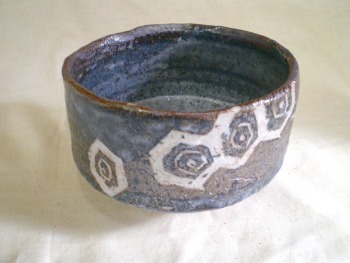



Sean bienvenidos, japonsistasarqueológicos, a una nueva entrega arqueológica, en esta ocasión nos vamos a la ciudad de Kameoka una vez dicho esto, pónganse cómodos que empezamos. - La ciudad de Kameoka, se localiza en la prefectura de Kioto, en la región de Kansai, nos vamos a trasladar a los hornos de Shino que se denominan así oficialmente :Sitios de producción de cerámica de Shino, Kioto alguna vez se llamó provincia de Tanba. A Continuación os pondré imágenes de dichas cerámicas, desde 1976 hasta 1986, con el fin de construir una carretera de peaje llamada Kyoto Jukanmichi, Shinogama fue excavada y supervisada continuamente. - Datan del periodo Nara entre los siglos VIII y IX, dicha área cubre un área amplia, desde la prefectura de Aomori en el norte hasta la prefectura de Miyazaki en el sur, el horno Otani No. 3, que investigó la Universidad de Osaka, también era un horno que producía cerámica vidriada en verde durante ese período. - Espero que os haya gustado y nos vemos en próximas publicaciones que pasen una buena semana. - 日本の考古学者たちよ、ようこそ!今回は亀岡市です。 それでは、ごゆっくりお過ごしください。 - 関西の京都府にある亀岡市、これから移動して、志野窯、正式には志野焼生産地といいます、京都はかつて丹波国と呼ばれていました。この窯元の写真を紹介します。1976年から1986年まで、京都縦貫道という有料道路を作るために、篠窯は発掘され、継続的に監視されました。 - 8世紀から9世紀の奈良時代のもので、北は青森県から南は宮崎県までの広い範囲にあり、大阪大学が研究している大谷3号窯も、その時代に緑釉陶器を生産していた窯である。 - 私はあなたがそれを好きで、将来の記事であなたを参照してください願っています素敵な週を持っています。
Welcome, Japanese archaeologists, to a new archaeological instalment, this time we are going to the city of Kameoka. Having said that, make yourselves comfortable and let's get started.
The city of Kameoka, located in Kyoto prefecture, in the Kansai region, we are going to move to the Shino kilns which are officially called Shino pottery production sites, Kyoto was once called Tanba province. Here are some pictures of these potteries. From 1976 to 1986, in order to build a toll road called Kyoto Jukanmichi, Shinogama was excavated and continuously monitored.
Dating from the Nara period between the 8th and 9th centuries, this area covers a wide area from Aomori prefecture in the north to Miyazaki prefecture in the south, the Otani No. 3 kiln, which was researched by Osaka University, was also a kiln that produced green-glazed pottery during this period.
I hope you liked it and see you in future posts have a nice week.





Sean bienvenidos Japonistasarqueologíacos, a una nueva publicación síntesis, del país del Sol naciente, una vez dicho esto póngase cómodos que empezamos. - Vamos a hablar de la batalla de Toba-Fushimi 27 de Enero 1868-31 Enero 1868, que forma parte de las Guerras Boshin, de carácter civil. - Está batalla la vamos a ver a través del arte que fue realizado por Tsukioka Yoshitoshi, perteneciente al Ukio-e. ¿Conocían la batalla? - Espero que os guste y nos vemos en próximas publicaciones, que pasen una buena semana. - 日出ずる国から、日本の考古学へようこそ、新しい要約出版物へ。 - 民事上の戊辰戦争の一部である、1868年1月27日から1868年1月31日にかけて行われた鳥羽・伏見の戦いについてお話します。 - 浮世絵に属する月岡芳年の作品を通して、この戦いを見てみます。 彼らはその戦いを知っていたのか? - 気に入っていただければ幸いです。今後の投稿でお会いしましょう。良い一週間をお過ごしください。 Welcome to Japanese archaeology, to a new summary publication, from the country of the rising sun. Having said that, make yourself comfortable and let's get started. - We are going to talk about the battle of Toba-Fushimi January 27, 1868-January 31, 1868, which is part of the Boshin Wars, of a civil nature. - We are going to see this battle through the art that was made by Tsukioka Yoshitoshi, belonging to Ukio-e. Did they know the battle? - I hope you like it and see you in future posts, have a good week.


Sean bienvenidos, japonistasarqueológicos, a una nueva entrega de religión nipona, una vez dicho esto pónganse cómodos qué empezamos. - Seguramente, todos hemos escuchado hablar del Budismo y Sintoísmo, dos religiones muy diferentes entre sí, ya que sus pilares religiosos no están hechos de la misma materia, voy a intentar resumir este tema para que todos podamos entenderlo mejor. ¿Cuándo llego el budismo a Japón? Llego en el siglo VI d.c en el período kofun también denominado protohistoria, lo que no voy a negar y lo que todos sabemos es que china, India y otros países influenciaron a Japón y eso lo podemos ver todavía a día de hoy. - Pero hace poco vi el uso de la palabra Sincretismo religioso, lo cual, me parece el término de lo menos apropiado, ¿Qué significa sincretismo? Unión, fusión e hibridación, casos más claros, lo podemos ver en Latinoamérica y con Grecia y Roma. Por lo cual el término más apropiado para este caso sería coexistencia o convivencia, además en el periodo meiji hubo una reforma religiosa para separar ambas religiones y convivencia al sintoísmo, religión del estado, a esto se le llama Shinbutsu bunri en hiragana sería:(しんぶつぶんり) ¿Qué opinan ustedes? - Espero que os haya gustado y nos veamos en próximas publicaciones que pasen una buena semana. - Primera foto :santuario Heian Jingu(Kyoto) Segunda foto: Templo Rengeoin( Kyoto) - Welcome, archaeological Japanists, to a new installment of Japanese religion, having said that, make yourself comfortable as we begin. - Surely, we have all heard of Buddhism and Shintoism, two very different religions from each other, since their religious pillars are not made of the same material, I am going to try to summarize this topic so that we can all understand it better. When did Buddhism arrive in Japan? It arrived in the 6th century AD in the Kofun period also called protohistory, which I will not deny and what we all know is that China, India and other countries influenced Japan and we can still see that today. - But I recently saw the use of the word religious syncretism, which seems to me to be the least appropriate term. What does syncretism mean? Union, fusion and hybridization, clearest cases, we can see it in Latin America and with Greece and Rome. Therefore, the most appropriate term for this case would be coexistence or coexistence. In addition, in the Meiji period there was a religious reform to separate both religions and coexistence with Shintoism, the state religion. This is called Shinbutsu bunri in hiragana: (しん ぶつぶんり) What do you think? - I hope you liked it and we'll see you in future posts and have a good week. - First photo: Heian Jingu Shrine (Kyoto) Second photo: Rengeoin Temple (Kyoto) - 考古学者の日本主義者の皆さん、日本の宗教の新しい記事へようこそ。そうは言っても、安心して始めてください。 - 確かに、私たちは皆、仏教と神道という、互いにまったく異なる 2 つの宗教について聞いたことがあるでしょう。それらの宗教的支柱は同じ素材で作られていないため、私たち全員がよりよく理解できるように、このトピックを要約してみようと思います。 仏教はいつ日本に伝わったのでしょうか? それは、原史時代とも呼ばれる古墳時代の西暦 6 世紀に到来しました。私はそれを否定しません。また、中国、インド、その他の国々が日本に影響を与えたことは誰もが知っており、今日でもそれを見ることができます。 - しかし、私は最近、宗教的混合主義という言葉が使われているのを目にしましたが、これは私にとって最も不適切な用語であるように思えます。 結合、融合、ハイブリッド化の最も明確な事例は、ラテンアメリカやギリシャ、ローマで見られます。 したがって、この場合には「共存」または「共生」という言葉が最も適切でしょう。また、明治時代には両宗教を分離し、国教である神道と共存する宗教改革が行われました。これをひらがなで「神仏分理」といいます。ぶつぶんり)どう思いますか? - 気に入っていただければ幸いです。今後の投稿でお会いしましょう。良い一週間をお過ごしください。 - 1枚目の写真:平安神宮(京都) 写真2枚目:蓮華王院(京都)








